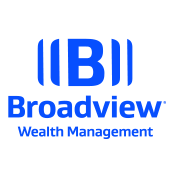Key Financial Terms
To understand investment matters, start with the lingo.
Alpha
Alpha is a coefficient that measures risk-adjusted performance, factoring in the risk due to the specific security rather than the overall market. A high value for alpha implies that the stock or mutual fund has performed better than would have been expected given its beta (volatility).
Bond
A bond is evidence of a debt in which the issuer of the bond promises to pay the bondholders a specified amount of interest and to repay the principal at maturity. Bonds are usually issued in multiples of $1,000.
Commodity
A commodity is a physical substance or raw material, which is interchangeable with another product of the same type and which investors buy or sell, usually through future contracts. The price of the commodity is subject to supply and demand.
Derivatives
Derivatives are financial products, such as futures contracts, options or mortgage-backed securities. Most of derivatives’ value is based on the value of an underlying security, commodity or other financial instrument.
Exchange-Traded Fund (ETF)
An exchange-traded fund (ETF) is a marketable security that tracks a stock index, a commodity, bonds or a basket of assets. ETFs differ from mutual funds because shares trade like common stock on an exchange. The price of an ETF’s- shares will change throughout the day as they are bought and sold.
Futures Contract
A futures contract is a standardized, transferable, exchange-traded contract that requires delivery of a commodity, bond, currency, or stock index at a specified price, on a specified future date. Unlike options, futures convey an obligation to buy. The risk to the holder is unlimited and because the payoff pattern is symmetrical, the risk to the seller is unlimited as well.
Generation-Skipping Trust
A generation-skipping trust is a type of legally binding trust agreement in which assets are passed down to the grantor’s grandchildren, not the grantor’s children. The grantor’s children skip the opportunity to receive the assets to avoid the estate taxes that would apply if the assets were transferred to them.
Hedge Fund
A hedge fund is an alternative investment that uses pooled funds that employ numerous different strategies to earn alpha for their investors. Hedge funds may be aggressively managed or make use of derivatives and leverage in both domestic and international markets with the goal of generating high returns. Hedge funds are generally only accessible to accredited investors as they require less SEC regulations other than funds.
IRA
A traditional IRA is a retirement account in which contributions are deductible from earned income in the calculation of federal and state income taxes if the taxpayer meets certain requirements. The earnings accumulate tax deferred until withdrawn, and then the entire withdrawal is taxed as ordinary income. Individuals not eligible to make deductible contributions may make nondeductible contributions, the earnings on which would be tax deferred.
Joint Tenancy
Joint tenancy refers to co-ownership of property by two or more people in which the survivor(s) automatically assumes ownership of a decedent’s interest.
Key Rate
The key rate is the specific interest rate that determines bank lending rates and the cost of credit for borrowers. The two key interest rates in the United States are the discount rate and the Federal Funds rate.
Lump-Sum Distribution
A lump-sum distribution is the disbursement of the entire value of an employer-sponsored retirement plan, pension plan, annuity or similar account to the account owner or beneficiary. Lump-sum distributions may be rolled over into another tax-deferred account.
Mutual Fund
A mutual fund is a collection of stocks, bonds, or other securities purchased and managed by an investment company with funds from a group of investors. The return and principal value fluctuate with changes in market conditions. It’s important to consider investment objectives, risks, charges and expenses carefully before investing.
Net Asset Value
Net asset value is the per-share value of a mutual fund’s current holdings. It is calculated by dividing the net market value of the fund’s assets by the number of outstanding shares.
Options
Options are financial derivatives sold by an option writer to an option buyer. The contract offers the buyer the right, but not the obligation, to buy (call option) or sell (put option) the underlying asset at an agreed-upon price during a certain period of time or on a specific date. The agreed upon price is called the strike price.
Price/Earnings Ratio
P/E ratio is the market price of a stock divided by the company’s annual earnings per share. Because the P/E ratio is a widely regarded yardstick for investors, it often appears with stock price quotations.
Qualified Retirement Plan
A qualified retirement plan is a pension, profit-sharing plan or qualified savings plan established by an employer for the benefit of its employees. These plans must be established in conformance with IRS rules. Contributions accumulate tax deferred until withdrawn and are deductible to the employer as a current business expense.
Risk Averse
Risk averse refers to the assumption that rational investors will choose the security with the least risk if they can maintain the same return. As the level of risk goes up, so does the expected return on the investment.
Security
A security is evidence of an investment, either in direct ownership (as with stocks), creditorship (as with bonds), or indirect ownership (as with options).
Trust
A trust is a legal entity created by an individual in which one person or institution holds the right to manage property or assets for the benefit of someone else. Types of trusts include: testamentary trust, which is established by a will that takes effect upon death; a living trust, which is created by a person during his or her lifetime; a revocable trust; and an irrevocable trust, which is a trust that may not be modified or terminated by the trustor after its creation.
Unconventional Cash Flow
Unconventional cash flow is a series of inward and outward cash flows over time in which there is more than one change in the cash flow direction. This contrasts with a conventional cash flow, where there is only one change in cash flow direction.
Volatility
Volatility refers to the range of price swings of a security market over time.
Withdrawal Penalty
A withdrawal penalty is a penalty incurred by an individual for early withdrawal from an account locked in for a stated period, as in a time deposit at a financial institution, or for withdrawals subject to penalties by law, such as from an IRA.
X
X is the fifth letter of a Nasdaq stock symbol and indicates the listing is a mutual fund.
Yield
Yield is the amount of current income provided by an investment. For stocks, the yield is calculated by dividing the total of the annual dividends by the current price. For bonds, the yield is calculated by dividing the annual interest by the current price. The yield is distinguished from the return, which includes price appreciation or depreciation.
Zero-Cost Strategy
Zero-cost strategy refers to a trading or business decision that does not entail any expense to execute. A zero-cost strategy costs a business or individual nothing while at the same time improves operations, makes processes more efficient or serves to reduce future expenses. As a practice, a zero-cost strategy may be applied in a number of contexts to improve the performance of an asset.
Source: The ABCs of Financial Terminology by LPL Financial


